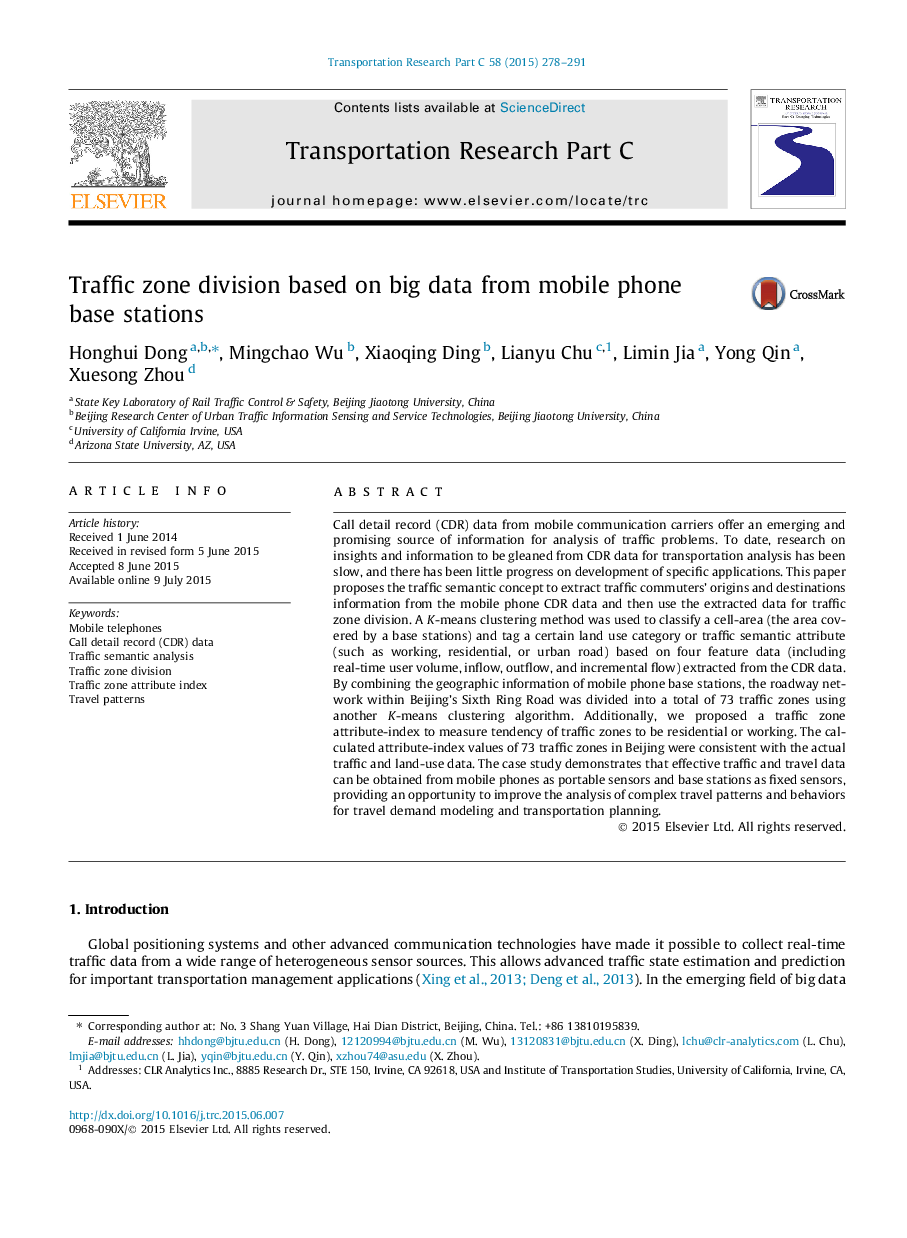| Article ID | Journal | Published Year | Pages | File Type |
|---|---|---|---|---|
| 524889 | Transportation Research Part C: Emerging Technologies | 2015 | 14 Pages |
•The traffic semantics concept was proposed and the representation framework was described.•Call detail record (CDR) data can reflect the users’ mobility behavior.•A K-means clustering method was used to divide the commuting traffic zones based on the CDR data.•Traffic zone attribute-index was proposed to indicate the preference on working or residential.•This paper provides an algorithm for transportation planning agencies in land use planning.
Call detail record (CDR) data from mobile communication carriers offer an emerging and promising source of information for analysis of traffic problems. To date, research on insights and information to be gleaned from CDR data for transportation analysis has been slow, and there has been little progress on development of specific applications. This paper proposes the traffic semantic concept to extract traffic commuters’ origins and destinations information from the mobile phone CDR data and then use the extracted data for traffic zone division. A K-means clustering method was used to classify a cell-area (the area covered by a base stations) and tag a certain land use category or traffic semantic attribute (such as working, residential, or urban road) based on four feature data (including real-time user volume, inflow, outflow, and incremental flow) extracted from the CDR data. By combining the geographic information of mobile phone base stations, the roadway network within Beijing’s Sixth Ring Road was divided into a total of 73 traffic zones using another K-means clustering algorithm. Additionally, we proposed a traffic zone attribute-index to measure tendency of traffic zones to be residential or working. The calculated attribute-index values of 73 traffic zones in Beijing were consistent with the actual traffic and land-use data. The case study demonstrates that effective traffic and travel data can be obtained from mobile phones as portable sensors and base stations as fixed sensors, providing an opportunity to improve the analysis of complex travel patterns and behaviors for travel demand modeling and transportation planning.
